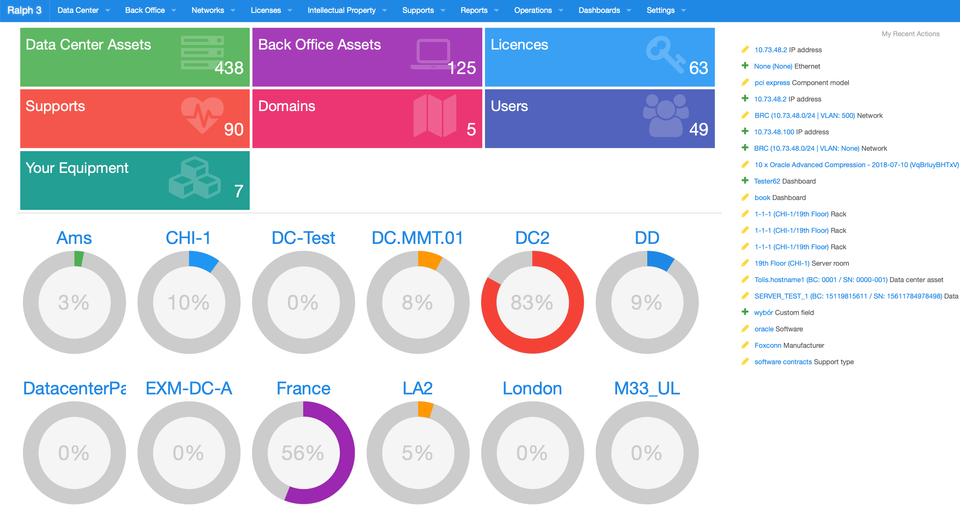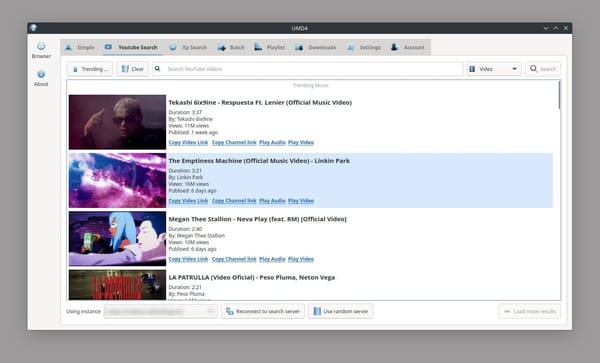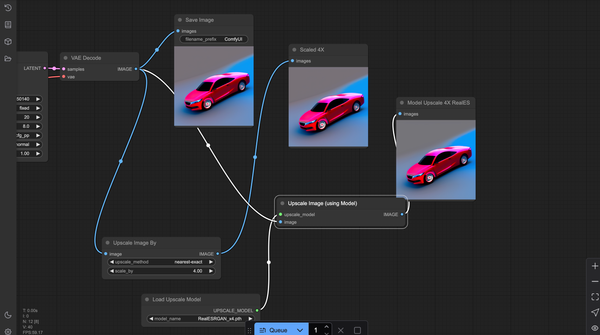8 Free Open-source Free Data Center Management Solutions
Table of Content
Data Center Infrastructure Management (DCIM) systems provide essential tools for managing and optimizing data center operations. They enable organizations to monitor assets, track power usage, and manage cooling systems, leading to improved efficiency and reduced operational costs.
These systems offer a unified view of the entire data center, allowing for better decision-making and resource allocation.
Benefits of Using a DCIM System:
- Enhanced Visibility: Gain real-time insights into asset performance and resource utilization.
- Cost Reduction: Optimize energy consumption and space utilization to lower operational costs.
- Improved Planning: Streamline capacity planning and reduce the risk of overprovisioning or underutilization.
- Risk Mitigation: Identify potential issues before they escalate, minimizing downtime and service disruptions.
- Data-Driven Decisions: Use analytics to inform strategic decisions and optimize workflows.
- Scalability: Adapt easily to growing data center demands and integrate with existing infrastructure.
Open-source DCIM solutions offer these advantages without the hefty price tag of commercial products, making them accessible for businesses of all sizes.
In the following you will find a list of the best open-source DCIM systems, that anyone can download and use for free.
1- Ralph
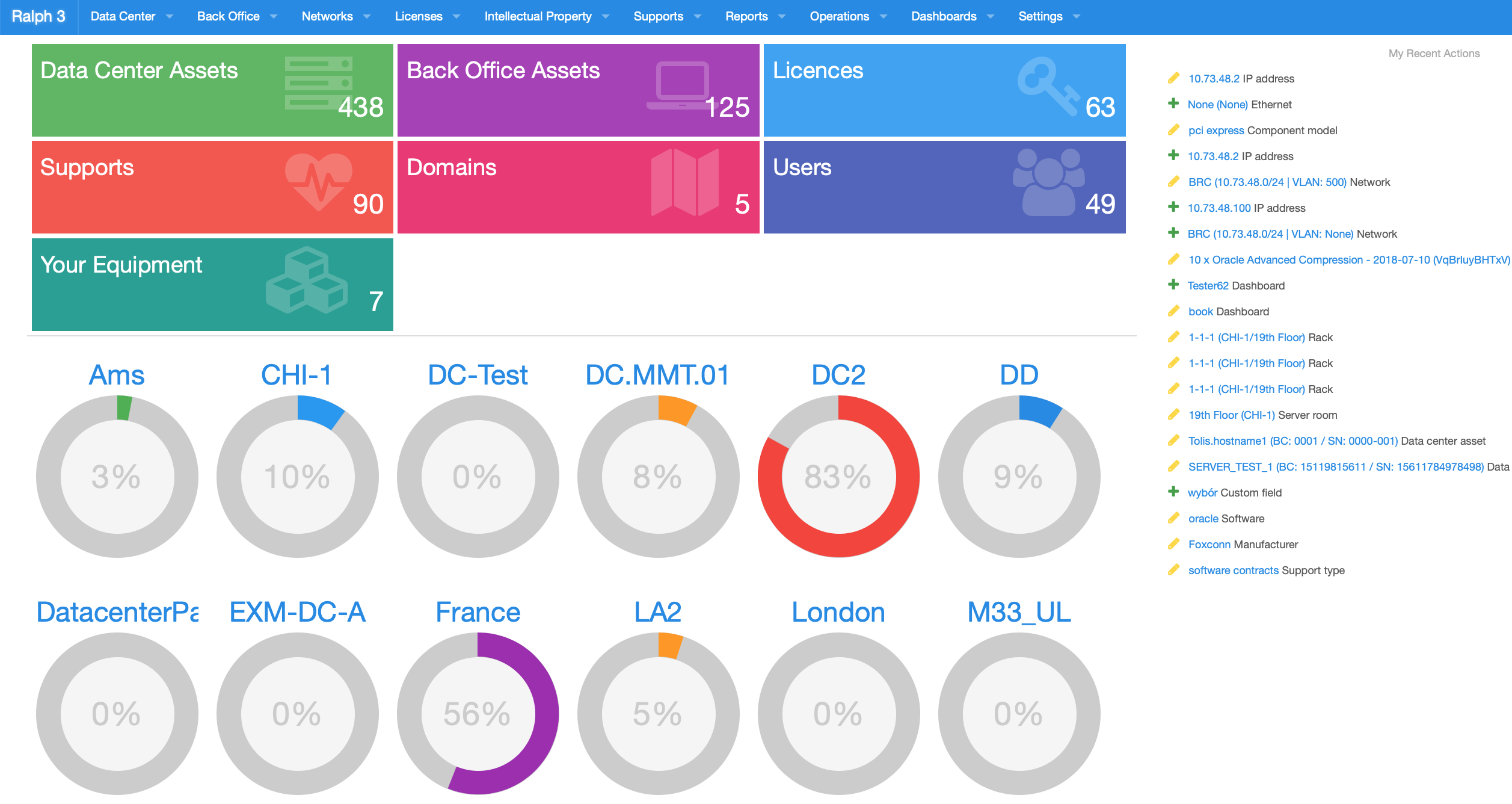
Ralph is free and open-source full-featured Asset Management, DCIM and CMDB system for data centers and back offices.
It allows server and data center managers to keep track of their virtual resources, server assets, and back office assets.
As of January 1, 2024, Allegro will discontinue all development and maintenance activities for Ralph on its GitHub repository. This means that the current version of Ralph will no longer receive updates or modifications from Allegro.
However, the existing code will remain available for the community, allowing individuals to continue contributing and developing the project independently.
Features
- keep track of assets purchases and their life cycle
- keep track of your racks, server rooms
- flexible flow system for assets life cycle
- data center and back office support
- dc visualization built-in
- User-friendly and responsive interface
2- openDCIM
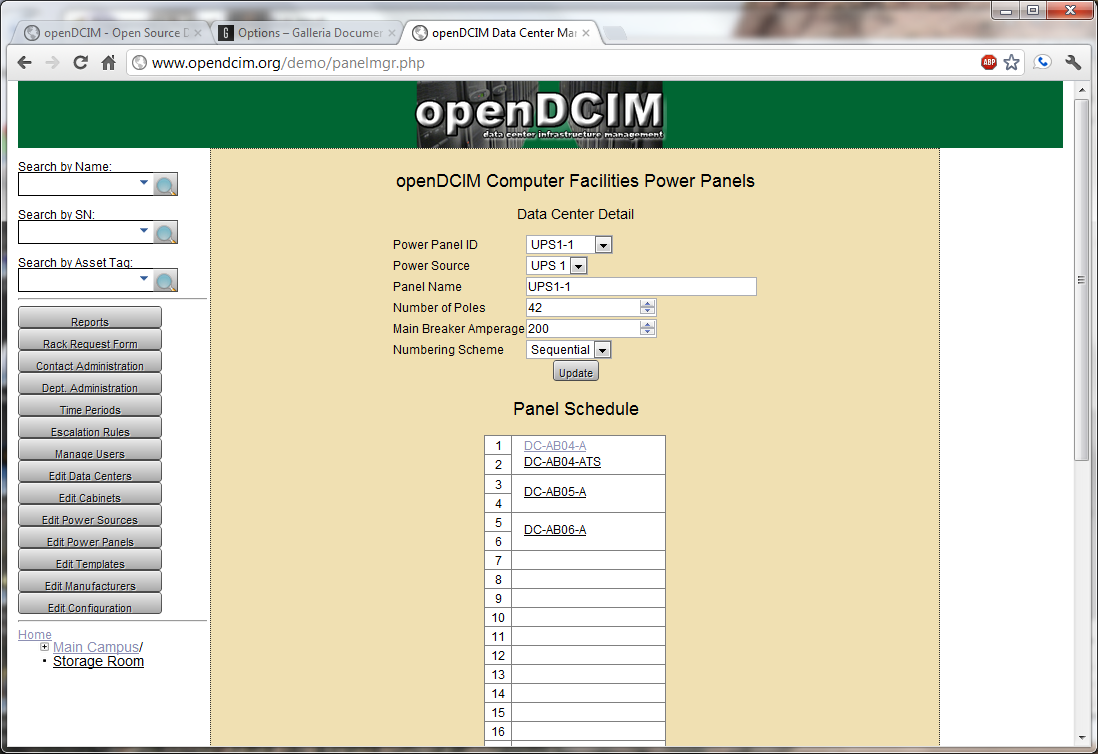
openDCIM is a free, web-based Data Center Infrastructure Management (DCIM) application designed to streamline data center inventory management. Aimed at replacing spreadsheets and word documents, openDCIM provides essential features for tracking physical assets within data centers.
It supports multiple rooms and focuses on managing critical capacity elements, including space, power, and cooling.
Released under the GPL v3 license, openDCIM encourages users to modify and share the software while giving credit to its origins.
Features of openDCIM
- Overlay layers on map for Power, Space, Temperature, and Weight capacity
- Asset Tracking: Complete physical inventory management for data centers.
- Multi-Room Support: Ability to manage multiple data center rooms.
- RESTful API
- Reporting on Fault Tolerance status for devices, and impact simulation of a panel or source feed outage
- Capacity Management: Monitors key elements: space, power, and cooling.
- Contact Management: Basic integration with existing business directories via UserID.
- Fault Tolerance Tracking: Simulates power outages to identify affected areas.
- Center of Gravity Computation: Calculates the center of gravity for each cabinet.
- Template Management: Create and manage device templates with overrides.
- Full audit log of every transaction
- Cable Tracking: Optional tracking of cable connections within cabinets and for switch devices.
- Archival Functions: Archive equipment designated for salvage or disposal.
- Intelligent Device Integration: Compatibility with APC, Geist, Liebert, and Server Technologies devices.
- Ability to manually enter values for power strip load
- Open Architecture: Built on a MySQL database for easy report generation and application export.
- Web-Based Client: Accessible via a web interface on a LAMP server.
System Requirements:
- Apache 2.x or higher with SSL.
- MySQL 5.x or higher.
- PHP 8.0 or higher.
- User authentication through Apache or LDAP.
- Linux environment (LAMP server).
3- GLPI

GLPI is a free software self-hosted package designed for asset and IT management, providing comprehensive solutions for data center management, ITIL-compliant service desk functionalities, license tracking, and software auditing. It helps organizations efficiently manage their IT resources, streamline workflows, and ensure compliance.
With GLPI, users can track assets, manage incidents, and optimize IT services, enhancing overall productivity and resource utilization in their environments.
Features
- Service Asset & Configuration Management (SACM): Tracks IT assets with dynamic inventory management.
- Request Fulfillment: Streamlines service requests, incidents, and problem management.
- Change Management: Controls planning and implementation of changes.
- Knowledge Management: Includes a knowledge base and FAQs.
- Contract Management: Manages contracts and associated documents.
- Financial Management: Tracks purchase orders and warranty details.
- Asset Reservation: Reserves IT assets for specific purposes.
- Data Center Infrastructure Management (DCIM): Controls critical data center assets.
- Software & License Management: Ensures compliance and cost control.
- Impact Analysis: Assesses consequences of changes/incidents.
- Service Catalog (with SLM): Manages available services.
- Entity Separation: Distinct management for different units.
- Project Management: Organizes and tracks projects.
- Intervention Planning: Schedules on-site interventions.
- Plugin Support: Extensible with various plugins.
4- Rackmonkey by Flux
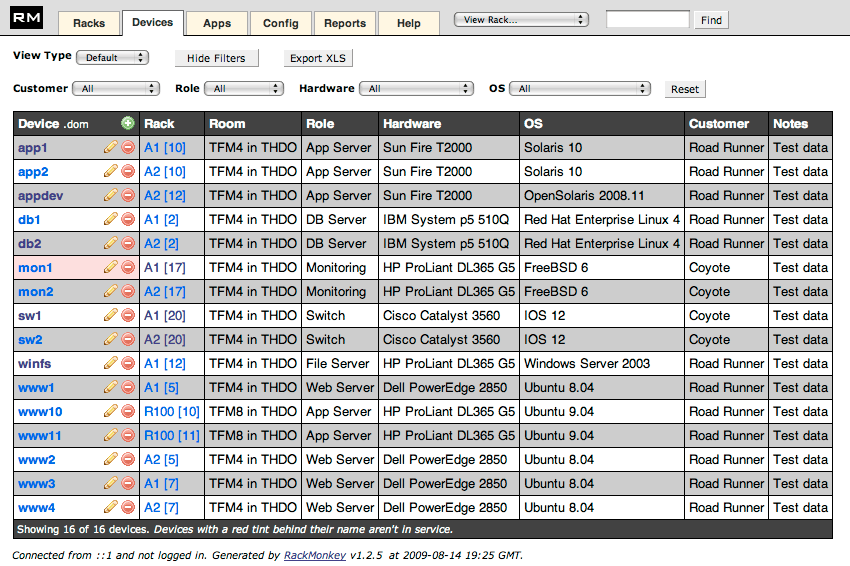
RackMonkey is a free web-based data center management tool designed for tracking and managing physical assets within a data center. It provides features for monitoring equipment, managing rack layouts, and maintaining inventory.
Its key functionalities include asset tracking, power management, and detailed reporting, all aimed at improving the efficiency and organization of data center operations.
Its user-friendly interface and flexible structure make it suitable for various data center environments.
Rackmonkey Features
- Asset Management: Track and manage physical assets, including servers, switches, and other equipment.
- Rack Layout Management: Visualize and manage rack layouts for efficient space utilization.
- Power Monitoring: Monitor power consumption and usage statistics for connected devices.
- Inventory Management: Maintain an organized inventory of all assets within the data center.
- Reporting Tools: Generate reports on asset usage, inventory status, and power consumption.
- User Management: Set up multiple user accounts with configurable permissions for access control.
- Flexible Configuration: Customize configurations to suit specific data center needs and workflows.
- Web-Based Interface: Access the application from any device with a web browser for remote management.
- Network Equipment Tracking: Monitor and manage network devices, including routers and switches.
- API Access: Integrate with other systems through a RESTful API for enhanced functionality.
5- Triton DataCenter
Triton DataCenter is an open-source cloud management platform designed for creating and managing service-oriented infrastructures across multiple data centers.
Formerly known as SmartDataCenter, Triton emphasizes ease of installation and scalability, powering both Triton Cloud and private data centers globally.
Triton DataCenter is ideal for organizations seeking a flexible, scalable solution for cloud management.
Triton DataCenter Features
- High-Performance Container Virtualization: Utilizes SmartOS zones for efficient container management, with KVM support for full guest OS functionality.
- RESTful API: Provides a public API for provisioning and managing virtual machines, networks, users, and images.
- CLI Tooling: Offers command-line interface tools for customer self-service and management.
- Operator Portal: A comprehensive web application for operators to manage the infrastructure.
- Service-Oriented Architecture: Built primarily with Node.js, ensuring robust and observable system design.
- Automated Installation: Supports installation via USB key, ISO, or iPXE for streamlined setup.
- Global Management Agents: Agents running in the global zone of compute nodes for effective management and monitoring.
- Documentation and Resources: Extensive documentation available for installation, architecture, and component reference.
6- DCIMStack
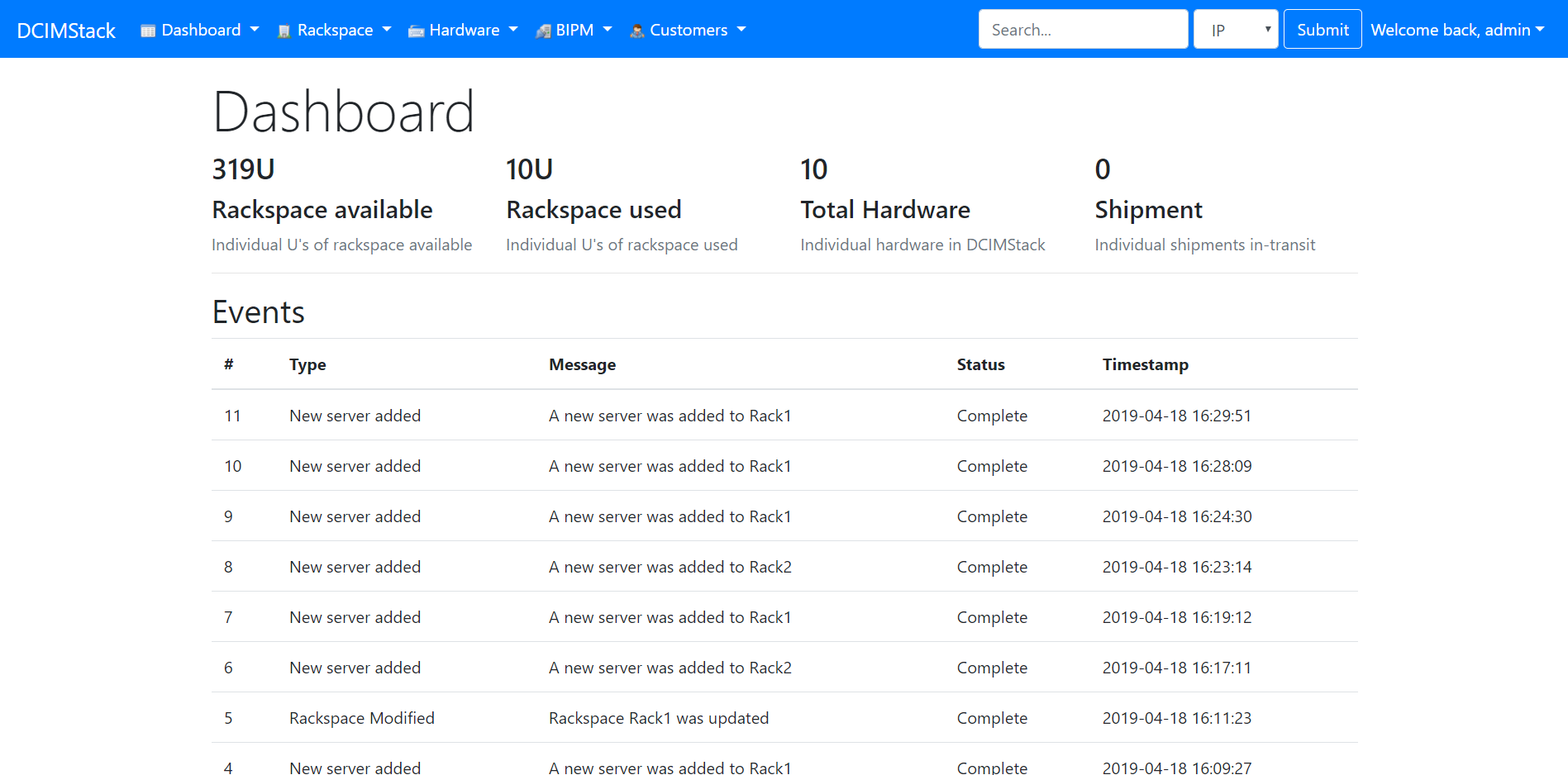
DCIMStack is an open-source Data Center Infrastructure Management (DCIM) solution designed to optimize data center operations. It provides essential tools for monitoring and managing data center assets effectively. The platform emphasizes scalability and flexibility, making it suitable for various organizational needs.
DCIMStack's Key features include asset tracking, real-time monitoring, and visualization of data center resources.
DCIMStack supports effective capacity management, ensuring optimal resource utilization.
The system also facilitates incident management and reporting, helping teams quickly address issues. Its user-friendly interface enhances operational efficiency and simplifies complex tasks.
DCIMStack is ideal for organizations seeking to improve data center management while leveraging open-source technology for customization and community support.
It can be easily installed with one-line using Docker on any Linux server.
7- DebOps
DebOps is an open-source project that offers a comprehensive set of Ansible roles and playbooks for managing Debian or Ubuntu hosts.
It is designed to streamline the deployment and management of services across single or multiple hosts, making it an excellent choice for creating and maintaining a data center environment.
With a focus on high customization, DebOps allows users to tailor configurations for different environments, ensuring flexibility and scalability.
With DebOps, organizations can efficiently manage their data center operations while leveraging the power of automation and customization.
Features
- Ansible Integration: Utilizes Ansible roles and playbooks for efficient management of Debian and Ubuntu hosts.
- High Customization: Allows extensive configuration through Ansible inventory, enabling the sharing of roles and playbooks across environments.
- Multi-Host Management: Supports managing services on both single and multiple hosts, enhancing operational flexibility.
- Database Support: Compatible with various SQL and NoSQL databases for data management.
- Web Server and Application Support: Facilitates the deployment of web servers and specialized applications commonly used in data centers.
- Virtualization Management: Enables deployment of virtualization environments using KVM/libvirt, Docker, or LXC for managing virtual machines and containers.
- Cluster Management: Offers tools for managing clusters, making it suitable for scalable and resilient infrastructures.
8- Nautobot
Nautobot is a Network Source of Truth and Automation Platform built on the Django framework, utilizing PostgreSQL or MySQL databases. It serves as a flexible and extensible data platform for networking, enabling users to define the intended state of network infrastructure.
With its plugin system and robust APIs, Nautobot simplifies the integration of network automation solutions, allowing for the rapid development of custom applications and streamlined data management.
Features
- Flexible source of truth for networking.
- User-defined relationships and custom fields.
- Data validation for naming standards.
- GraphQL and REST APIs.
- Native Git integration.
- YAML data file loading.
- Evolving plugin system.
- Custom models and APIs.
- Single Source of Truth for disparate data.
- Change logging.
- Authentication and permissions management.
- Webhooks for automation.
- Streamlined data management.
- Rapid development of network automation apps.
Which one would you choose?
Here's a comprehensive comparison table for the mentioned projects, including their license types, technologies, features, and use cases:
| Project | License Type | Technologies | Features | Use Cases |
|---|---|---|---|---|
| Ralph | MIT License | Python, Django | Asset management, billing, monitoring, and API integration | Data center management and resource tracking |
| openDCIM | GPL-3.0 | PHP, MySQL | Rack management, equipment tracking, power usage, and capacity planning | Data center inventory and organization |
| GLPI | GPL-3.0 | PHP, MySQL | IT asset management, ticketing system, and financial management | IT service management and help desk solutions |
| Rackmonkey by Flux | GPL-2.0 | Ruby, Rails | Rack management, asset tracking, and multi-user support | Hardware inventory and management |
| Triton DataCenter | Apache 2.0 | Python, JavaScript | Resource management, monitoring, and alerting | Data center operations and resource optimization |
| dcimstack | MIT License | Python, Flask | Rack management, asset tracking, and server monitoring | Data center infrastructure management |
| DebOps | MIT License | Ansible, Python | Configuration management, automation, and deployment | DevOps practices and infrastructure management |
| Nautobot | Apache 2.0 | Django, REST API | IP address management, device tracking, and network visualization | Network infrastructure management |
Final Note
Adopting a free open-source Data Center Management solution is a strategic move for organizations aiming to enhance efficiency and control over their IT resources. The eight solutions discussed in this post provide powerful features that facilitate effective asset management, capacity planning, and operational monitoring.
By leveraging these tools, organizations can reduce costs, improve performance, and maintain greater flexibility in managing their data center infrastructure.

